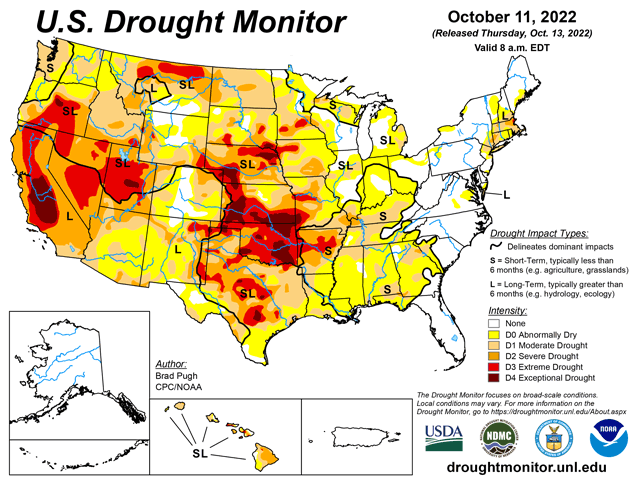Baranick's Favorite Story of 2022
Digging Into Drought Monitor Helped Teach More About How It's Done
Editor's Note:
The turn to winter traditionally has us thinking back over the year that was. Here in the DTN/Progressive Farmer newsroom, we're also prone to look back on the accomplishments, the challenges, and the things that didn't turn out as planned. In that vein we again asked our reporters and editors to look back at some of their favorite stories from the year. The pieces range from hard-hitting investigative journalism, to heart-tugging stories of loss, to the fun discoveries that can be found on farmsteads and small towns. We hope you enjoy our writers' favorites, starting with this one by John Baranick.
**
Being a scientist, I like to deal with data and numbers. I have not been very comfortable with writing ever since I was a child. English or Literature were always my least favorite classes and in college I actively avoided the Journalism School, even though the building was right next door. I have never felt prepared to write or be a journalist and so taking a position within the DTN newsroom has been quite the challenge for me.
Most of the blogs and articles I write are therefore opinion, either of my forecasts or thoughts about weather pattern changes and impacts to agriculture. These are topics that are easily formed in my head by studying computer models and other data, or talking to my colleagues at DTN.
But one story that I felt needed to be told was in regard to drought. So much of the country was either in drought or in-and-out of it throughout the year on the U.S. Drought Monitor and I had heard from some producers during farm shows about how far behind they were in precipitation this year. I thought that producers would want to know what would it take to get out of their current drought situation. Was it as simple as getting 9 inches of rain to end the year if you were 9 inches behind so far?
To do that, I had to do a little reporting -- conduct an interview with the folks at the National Drought Mitigation Center in Lincoln, Nebraska, ask questions, and confirm my thoughts with the source before sending it off to our editorial team. It was something that I really had never done before and of which I felt proud to cover. I also learned a few things about the Drought Monitor and how that map that I use so often gets made. If you missed it, you can read the story here: https://www.dtnpf.com/…
You might also want to check DTN Ag Meteorologist Bryce Anderson's blog this week, "How Drought Deepened in the Central US During 2022" -- where you can see how he applied the Drought Monitor as a tool to assess what has happened in the last year.
John Baranick can be reached at john.baranick@dtn.com
(c) Copyright 2022 DTN, LLC. All rights reserved.
P[L1] D[0x0] M[300x250] OOP[F] ADUNIT[] T[]




